Breaking news
Belgium: unprecedented military convoy for 75th anniversary of liberation.
At the initiative of Maj.Gen. Marc Thys, commander of the Land Component of the Belgian army, an unprecedented military convoy was designed to fit in the scheme of an FTX (Field Training Exercise) but gathering current Belgian army vehicles, World Heritage Institute World War 2 vehicles, and privately-owned World War 2 vehicles.

On Sept. 5, 2019, the vehicles of the three convoys started from the Cinquantenaire, in Brussels, and drove toward Vilvoorde, the first stop of the day. (Picture source: Army Recognition)
Starting on 31st August from the city of Mons at the opportunity of the annual “Tanks in Mons”, the only event in the world where World War 2 main battle tanks – among other WW2 vehicles – are allowed to drive on public roads and (very) narrow forested trails before parading on the wonderful city main square, the “Liberation Column North” followed an itinerary linking several Belgian cities in the northern part of the country, liberated mainly by British troops that encompassed the Belgian-Luxembourg “Brigade Piron”, named after its Belgian commander Colonel Jean-Baptiste Piron.

Itinerary followed by the Convoy from its departure point in Mons to its destination (Map issued by the Belgian army)

KMW Dingo 2 MPPV towing a 120mm mortar. At the background, the last British AEC Matador armored car in driving condition of the world, which follows a Scammel recovery truck, both vehicles belonging to the World Heritage Institute (Picture source: Army Recognition)
The convoy was made of three components: Convoy A gathered 20 current Belgian army vehicles; Convoy B gathered 20 World War 2 vehicles – namely several Sherman tanks and British armored cars – from the Royal Museum of the Army, part of the World Heritage Institute; they came mainly from the Vehicle Restoration Center operated by a military team located in the Bastogne Barracks, under the command of Major Pascal Catherine; the other vehicles came from the artillery Gunfire museum located in Brasschaat; finally, Convoy C gathered 32 WW2 vehicles owned by private collectors coming from Belgium, UK, Switzerland, etc. This unprecedented combination of very dissimilar military vehicles was a challenge to manage.
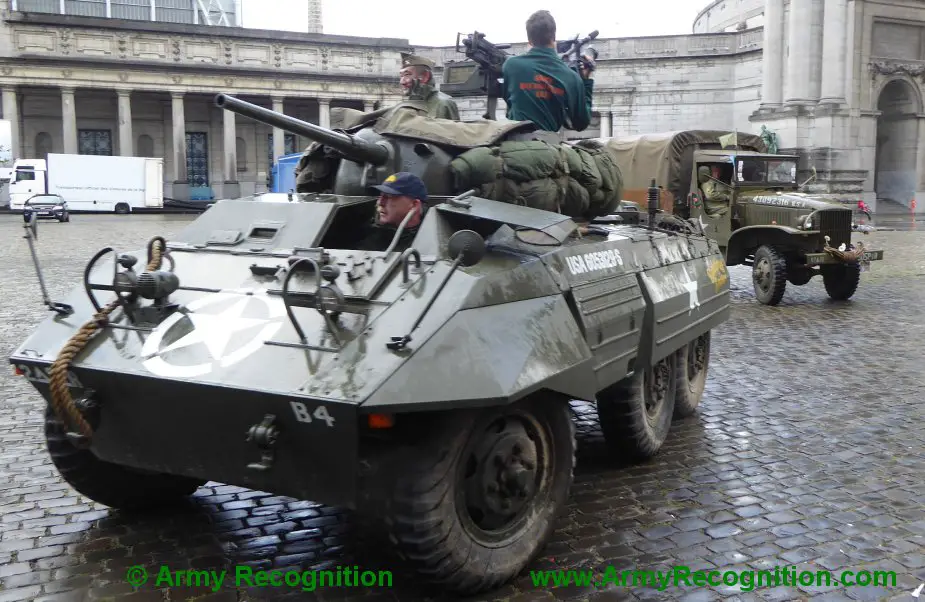
Ford M8 armored car made in 1943, belonging to Warwick Boulton, a British collector. Army Recognition is filming from the turret. The M8 is followed by a GMC CCKW-353 (Picture source: Army Recognition)
Starting from Mons on Monday, September 2, the spectacular convoy ended in Leopoldsburg on 15 September after what has been a kind of an odyssey, full of interesting lessons to draw from the experience that enjoyed incredible public success all the journey long. The whole operation was managed by the Belgian army. If the planning was sometimes (seriously) questioned by the WW2 vehicle drivers and participants, the logistic support was unanimously praised for the efficiency and kindness of its actors.

André Witmeur, president of the Belgian Military Vehicle Trust (BMVT), at the wheel of his Morris Commercial C8 GS (Picture source: Army Recognition)
January 2020 will see the southern counterpart of this FTX: a similar three-component convoy will start from the historical city of Bastogne, somehow abusively monopolizing the memory of the Battle of the Bulge, and follow an itinerary aiming at celebrating the liberation of the south of Belgium in January 1945, after the bloody failure of the last German offensive on the western front. One thing to fear, though: if the snow falls like in 1944-45 winter, the Belgian army’s Scania tank transporters will be unavailable, as these 6x4 trucks are not able to drive on slippery roads in a hilly landscape like the Belgian Ardennes… unlike their U.S. WW2 ancestor, the formidable 6x6 Pacific Car & Foundry M26 Dragon Wagon. A puzzling operational concern, isn't it?
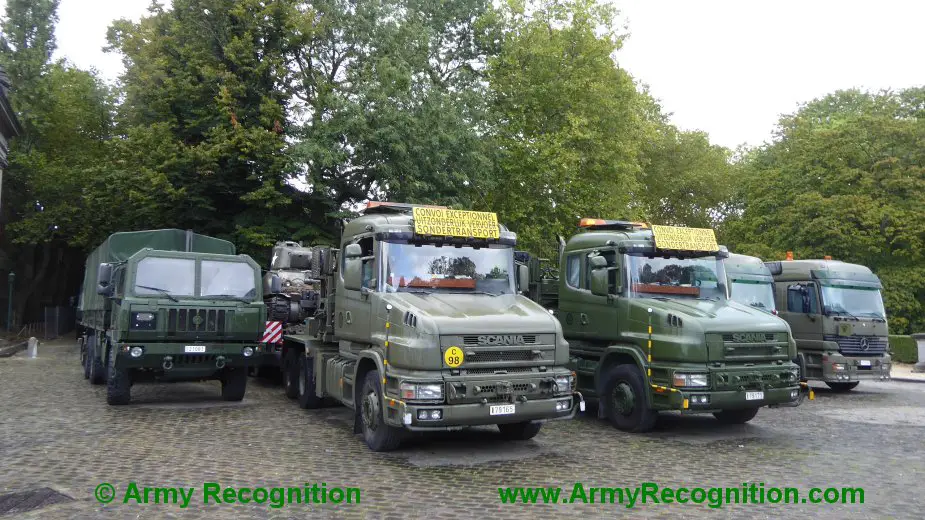
The tank transporters carrying the Sherman tanks of the World Heritage Institute at the Cinquantenaire, Brussels. (Picture source: Army Recognition)
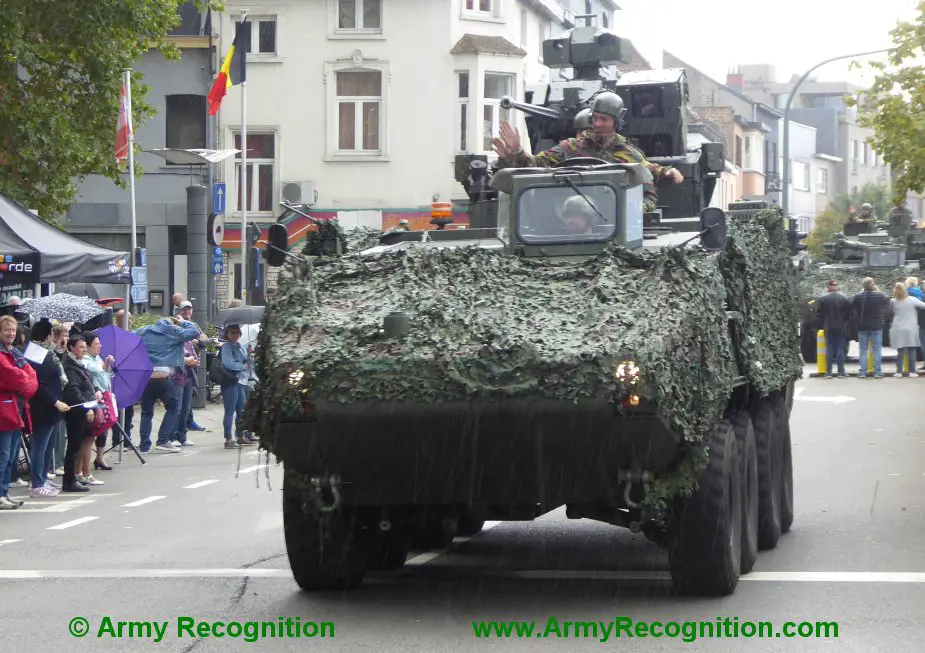
Piranha IIIC DF30 leaving Vilvoorde (Picture source: Army Recognition)
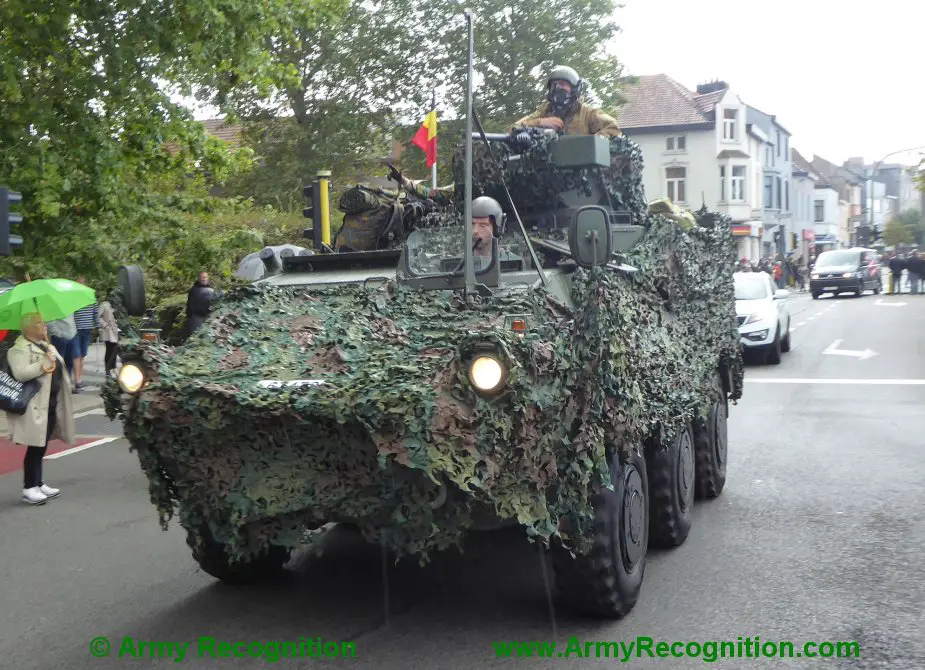
Steyr-Puch Pandur Recce & Observation (Picture source: Army Recognition)
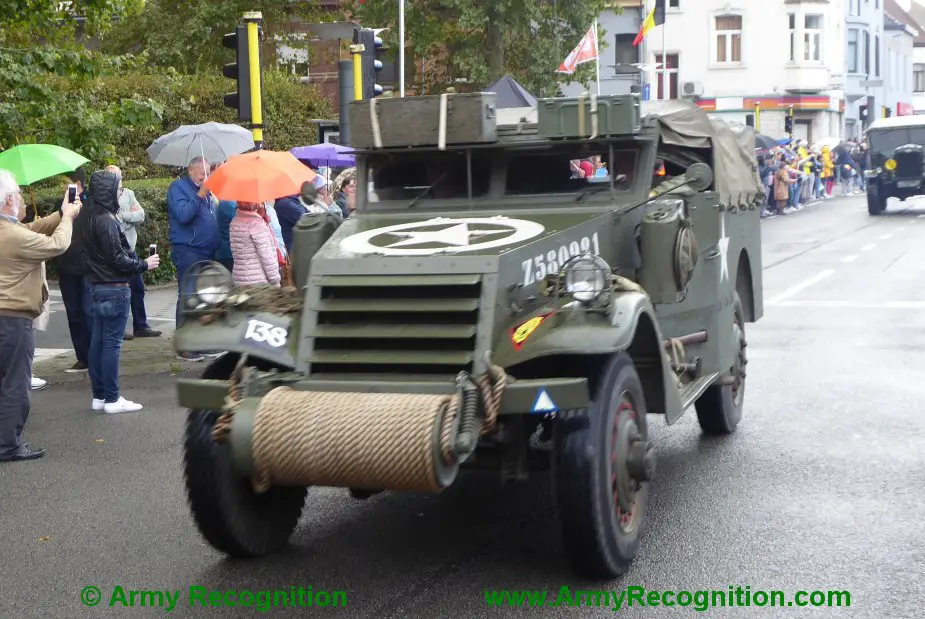
White M3A1 Scout Car of the World Heritage Institute in Belgian-Luxembourg "Brigade Piron" markings (Picture source: Army Recognition)

Humber Scout Car of the World Heritage Institute (Picture source: Army Recognition)

White M3 half-track of the World Heritage Institute with ambulance markings. It is followed by a White M16 anti-aircraft half-track armed with a "quad-fifty" turret, four .50 heavy machineguns that, when used against infantry, were nicknamed "meat chopper". (Picture source: Army Recognition)
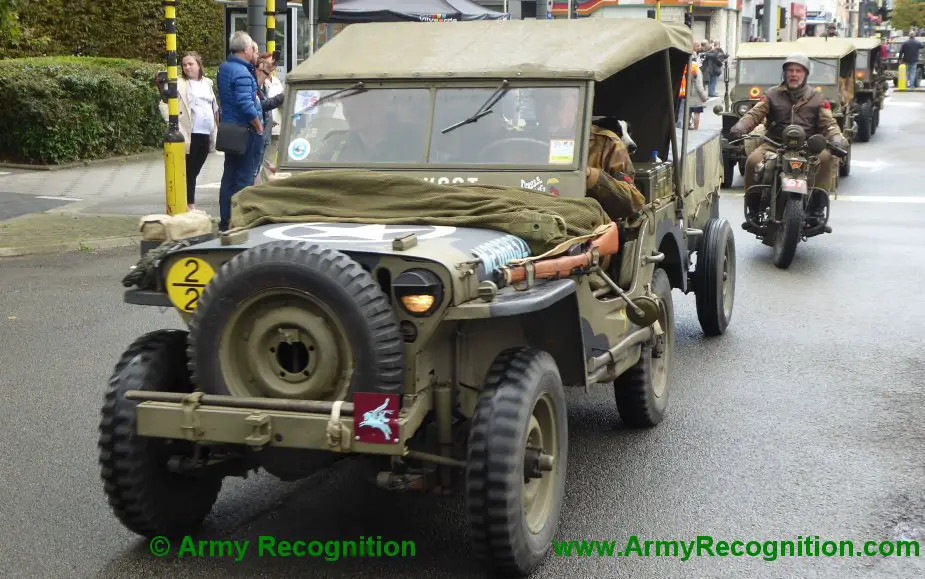
Willys MB Jeep in 6th British Airborne Division markings of ret. surgeon colonel Daniel Daubresse, commander in second of C Convoy and a member of the Belgian Military Vehicle Trust (Picture source: Army Recognition)
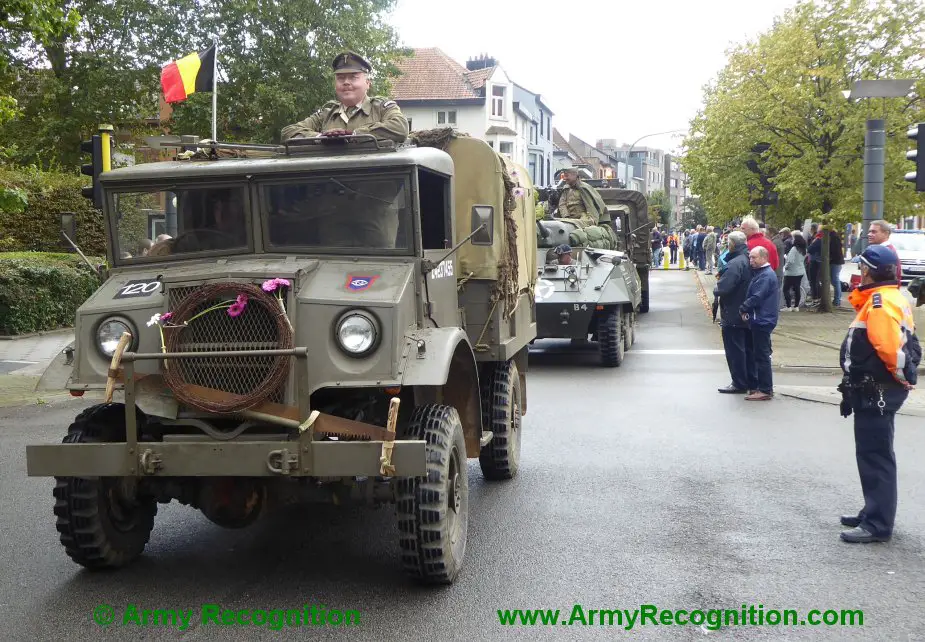
Privately-owned Chevrolet C15 CMP (Canadian Military Pattern) (Picture source: Army Recognition)


























